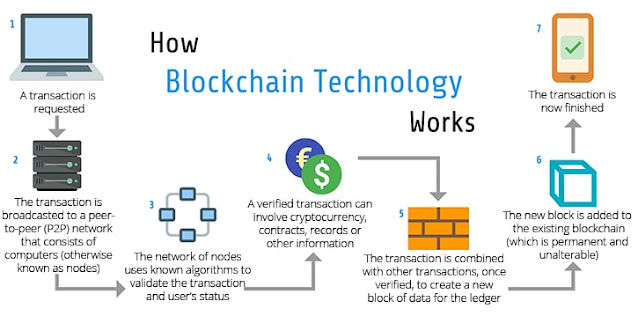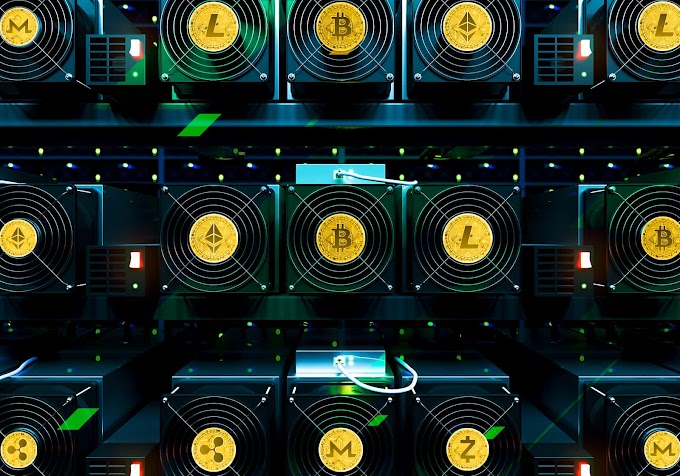The term cryptocurrency is increasingly being discussed following the rise in different types of virtual money such as bitcoin as the demand for bitcoin as an investment continues to fluctuate as its value continues to fluctuate. This article will review the basic concepts of cryptocurrency, how the system works, facts related to the system, and what it is trying to offer in the form of financial trade order disruption.
 |
| image by google |
Definition of cryptocurrency
Etymologically, cryptocurrency is made up of two words, namely crypto which refers to cryptography or coding language in the computer world and currency which refers to currency values. It can be surmised that cryptocurrency is a digital currency mechanism that can be used to conduct transactions virtually (via the Internet) protected by a complex computer code.
So is it different from currencies that are currently commonly used, such as the rupiah currency, which is also widely used for digital transactions? Cryptocurrencies have a decentralized nature, while the transaction model that is often used in society is centralized.
The following explains the difference between these two traits in a case study.
The transaction model is an example of the centralized nature often used by the public. For example, the example given in this case is that parents want to send money to their children overseas, so what they do is use banking services (ATM, mobile banking, or come directly to the respective bank). We do. And then some money in their child's account number. Transactions are basically done through trusted intermediaries of banks and services.
So the process is that the money transferred actually first goes to the bank, then is sent to the recipient. The process is real time so that shifting is not felt. However, what is quite felt is precisely because the process is through an intermediary, so there is a reward that must be paid, i.e. in the form of an administrative fee, either issued at the same time (if is sent to a different bank account) in administrative fees that are charged every month.
Illustration of a centralized financial transaction process
Whereas the decentralized nature means that there is no intermediary or particular party that acts as an intermediary. Transactions are done on a peer-to-peer basis from sender to recipient. All transactions are recorded over the network, on computers around the world, or are called miners (miners who help secure and record transactions on the network). Miners with virtual money used will receive a commission themselves, but not everyone can become a miner, as it takes specialized skill with complex computational processing to crack the cryptography used. This is one reason why cryptocurrency miners typically use high-spec and specialized computers.
 |
| image by google |
Illustration of decentralized financial transaction process
This decentralized nature is the DNA of the blockchain system. Basically blockchain is a platform that allows cryptocurrency digital currencies to be used for transactions.
blockchain definition
A blockchain is a recording system or comprehensive database on the Internet, often referred to as a distributed ledger. Every recorded transaction can also be viewed by all internet users. Therefore a blockchain can also be defined as a ledger that can be accessed by anyone, including non-transactional people. Recording and recording transactions in blockchain also has many features, which are as follows:
 |
| image by google |
do more logical calculations
Basically blockchain is something that can be calculated mathematically, as it consists of blocks in the form of code which can be translated and verified by developers. The algorithm present in it makes the value more scalable unlike the currency used daily today. For example the USD, its value is usually controlled by the Central Bank in the United States. They are free to print how much they can print in any given period, including interest rate effects.
Unlike cryptocurrencies, because it is based on structured mathematical calculations, even the number of currency distributions can be estimated. So that everyone can know how much digital money will be in the world in three years. The rate of inflation can also be properly estimated.
have good protection
The advantage of the decentralized nature of blockchain is that no data is centralized in one place. Everything extends to the miners' servers, aka miners that help keep the blockchain network secure. To become miners, they must accurately solve existing computation algorithms, in order to create a new block (with commission in the form of digital money). Because the information is scattered, even if a hacker tries to break into the system, they should be able to control at least 50% of the miner's computers on the network.
 |
| image by google |
cryptocurrencies that exist today
There are several types of cryptocurrencies that are currently widely used, for example Bitcoin, Ethereum, Litecoin, Monero or Ripple. Bitcoin was the first digital currency to be launched, and is currently the most valuable. One of its peculiarities is that bitcoin has only been created with up to 21 million coins (it is estimated that it will only be minted in 2140), a protocol that cannot be resisted as it has been a protocol from the beginning. Is.
bitcoin amount and inflation forecast
There is a fixed distribution threshold, making bitcoin incapable of counterfeiting or inflation. Bitcoin is also the beginning of a new financial transformation. Bitcoin allows people to transact globally with computing devices without the need for intermediaries such as banks or other services.
Which is currently no less popular is Ethereum, which was created in 2015 by Vitalik Buterin. The concept is almost the same as bitcoin, as both are built on a blockchain network. Here miners work to earn ether, the cryptocurrency that helps run the Ethereum network.
To conceptualize decentralized transactions, Ethereum can take advantage of decentralized autonomous organizations, a transaction management body run entirely by programming code and smart contracts without any central authority and control. No third party can change the data that is stored in the blockchain network.
In addition to the above two types of coins, there are still many alternative coins with their own characteristics. According to Coinmarketcap.com, there are currently over 1560 types of cryptocurrency-based digital currencies spread around the world.
What affects the value of cryptocurrencies
Cryptocurrency fluctuations in price are based on a number of conditions, one of which is availability/lack. But sometimes its value increases or decreases due to the trust and usage among its user community. In general, the price movements of cryptocurrencies are influenced by market mechanisms.
Bitcoin exchange rate fluctuations over the past year
Unfortunately the cryptocurrency market has a fairly high volatility or rate of change, so it is very volatile. If more people want the currency and its price is not too high, its value will increase as well. Other factors sometimes play a role. Some time ago the WannaCry attack indirectly contributed to the increase in price volatility, as it forced users to pay via cryptocurrency.
 |
| image by google |
transaction mechanism
The basic concept in every cryptocurrency transaction, the entire network will record the current history, including transaction amounts and balances. For example, someone who has successfully made a transaction and has been confirmed by the recipient, the entire network connected to the blockchain will immediately know an explanatory information that a certain number of transactions have taken place and will be digitalized by providing a private Signed with. Key in System.
 |
| image by google |
Recipient confirmation is a very important part of cryptocurrency transactions. Confirmed transactions are stored in containers called blocks. Transaction records are permanent, cannot be altered, hijacked or falsified and cannot be part of the blockchain or blockchain. This permanent nature makes a cryptocurrency transaction irreversible, aka it cannot be canceled once it has been sent.




